13 Intriguing Facts about Alaska
Early March, 2024 finds me about halfway through my nine-week stay in Juneau, Alaska. I’m here in this winter wonderland happily looking after two beautiful cats while exploring the greater Juneau area.
While researching and exploring Juneau, I’ve also been learning a lot about the entire state of Alaska. Some things I dimly remember from childhood American history lessons, while other things include quintessential Alaskan ‘facts’ and ‘images’, while still others are entirely new facts for me.
Here’s what I’ve learned – and re-remembered – about America’s largest state…
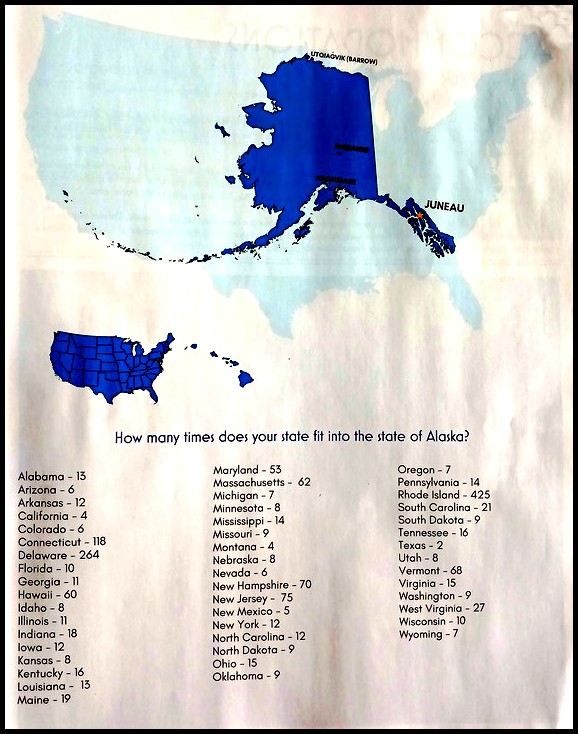
1. Check out how huge Alaska is
Everyone knows that Alaska is a huge state, in fact, it’s America’s largest state by far. Somewhat amazingly, Alaska is larger than Texas, California and Montana combined!
Here’s a neat pictograph, that I found in a Juneau brochure, which demonstrates exactly how big Alaska is comparted to each other US state. For fun, check to see how many times your state fits into the vast land area of Alaska.
More concrete stats include:
Alaska’s total land area = 663,268 square miles In comparison, Texas has 268,596 square miles while California has a mere 163,696 sq miles.
Alaska is also much bigger than most other nations! More precisely, Alaska is larger than 179 of 193 UN recognized world countries. It’s much bigger than each European country.
Only 15 countries are larger than Alaska, including Russia, China and India. A handful of more obscure countries have nearly the same land area as Alaska, including Mongolia, Iran, Sudan, Libya and Saudi Arabia. Not that that helps many people put its size in perspective. Probably the map above is more useful.
2. Alaska was bought by the US government from Russia
Here’s one of those vague remembrances from school days, something I had almost completely forgotten about Alaska.
The vast region now known as Alaska was originally inhabited by various indigenous tribes for many millenia before white men arrived.
In the late 1800s Russian, Americans, British and French arrived, primarily for hunting animals for fur and pelt trading. Eventually the Russians took control of the land. But fur trading proved difficult, expensive and ultimately unprofitable for them, so in 1867 the Russians sold it to the Americans for $7.2 million dollars in an act officially called the Alaska Purchase by the US government.
For that sum, the US bought 586,412 square miles /1,518,800 square km of land, amounting to a mere $o.35 per acre! At the time, $7 million was a huge sum of money. But in today’s monetary value, it’s not so very much for such a massive tract of land. Many wealthy people own homes worth more than that.
3. Alaska was a territory of the US for many decades
The land bought in the great Alaska Purchase was held as a territory of the US for many decades, not as a state. As a territory, it was much like current-day US territories of Puerto Rico and the far-flung Pacific Islands of Guam and American Samoa.
Alaska remained a US territory from 1867 until 1959, when it finally was granted statehood.
4. Alaska was America’s 49th state
As noted above, Alaska officially became a state of the USA in 1959. More specifically, it became America’s 49th state on Januaray 3, 1959 when then President Eisenhour signed the official statehood document in Washinton DC. Later that same year, Hawaii become the 50th state on August 21st 1959. The addition of Alaska as a state increased the size of the USA by nearly 20%.
In Alaska, the official Alaska statehood ceremony took place on January 4th, in Alaska’s remote capital, Juneau, located in far SE Alaska. The ceremony took place at the Juneau Public Library, where a new 49-star US flag was hoisted up a flagpole for the first time in history.
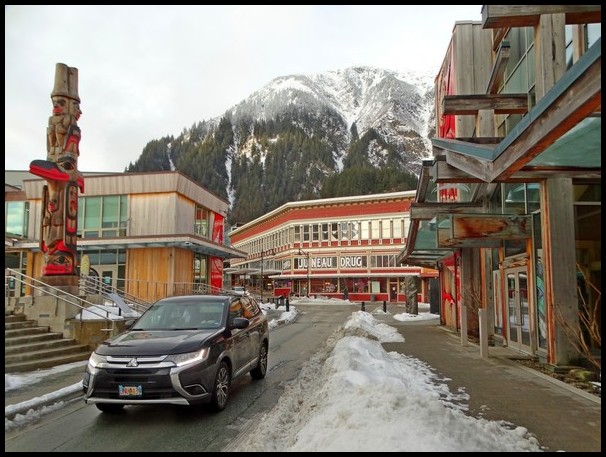
5. Juneau is Alaska’s capital city
Most people would guess that one of Alaska’s much larger and more well-known cities, like Anchorage or Fairbanks, would be the state capital. That would make sense.
Instead, tiny and remote Juneau town is the state’s capital and has been since it gained statehood. Actually, Juneau was the capital of the Alaskan territory long before Alaska became a state in 1959. Juneau simply altered from being a territory capital to a state capital.
6. Juneau still flies an American flag with 49 stars
To this day, a full-size 49-star US flag is flown in front of Juneau City Museum, the small historic building that was originally Juneau Library, where the inauguration of Alaska becoming a US state took place.
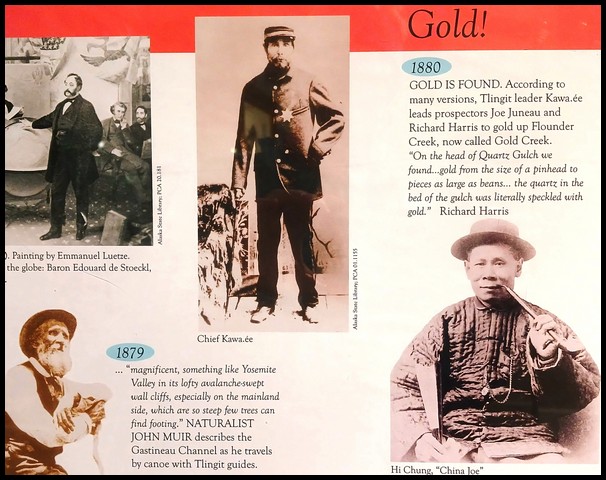
7. Klondike Gold Rush happened in Alaska
Most Americans have at least heard of the big historic Klondike Gold Rush because of American History lessons, though we may not remember the details. For me, this another one of those US history facts that I vaguely remember learning about.
Turns out the Klondike Gold Rush happened in Alaska. More specifically, it was centered around Juneau, in Alaska’s far and remote southeast panhandle region. According to legends, in 1880 a native Tlingit leader showed gold in a stream to two exploring prospectors, who then quickly kicked off the big gold rush.
Gold in Juneau proved to be so abundant that within a decade the town had developed into a hub full of luxurious modern conveniences and lavish lifestyles for a handful of lucky prospectors. Four different gold mining companies set up in the region and for a time Juneau was called The Gold Capital of the World.
Although very successful and prosperous for a time, the Juneau gold mines did not last so very long. By 1917, most mines had closed, due to mine collapse, dropping gold prices, WWI sending men off to war and other factors. One mine did straggle on until the 1960s, but that one eventually closed too.
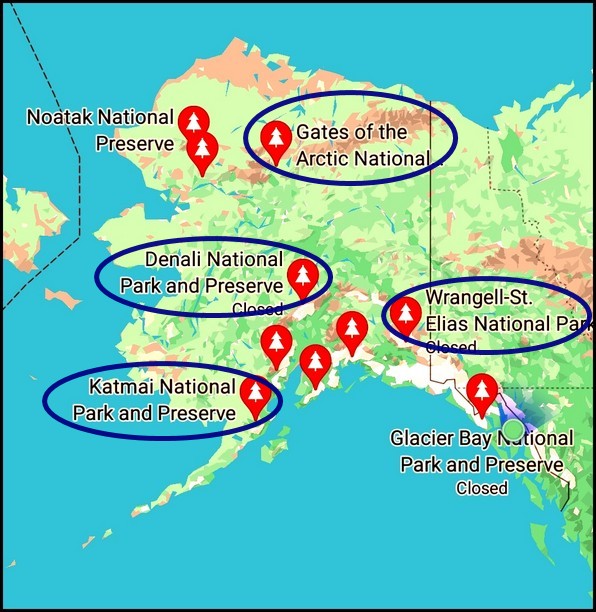
8. America’s four largest national parks are all located in Alaska
Denali National Park and Preserve protects a whopping 6,045,153 acres – 9446 sq mi; 24,464 km2 – of pristine wilderness in central Alaska. The park is larger than several US states, including Delaware, New Hampshire and Rhode Island, to name a few.
Before 1980, Denali National Park was the largest US national park. In 1980 two new, even larger parks were established: Wrangel-St Elias NP and Gates to the Arctic NP, both also located in Alaska. America’s fourth largest national park, Katmai NP, was also formed in 1980 in Alaska.
Denali National Park’s centerpiece is spectacular Mt. Denali and much of the rugged Alaska Range. The territory includes forests, alpine meadows, tundra, bogs and tussocks, lakes and rivers, mountains and valleys, glaciers and snowfields. Most of the park area has a subarctic climate, with a long extremely cold winter and a short wet summer.
Despite the harsh climate, a vast plethora of wild animals live in the parklands. They include grizzly bears, black bears, caribou, moose, wolves, Dall sheep, cayotes and many smaller mammals, migratory birds and fish.
Several native tribes traditionally lived on these lands and still have rights to live and hunt within the park lands.
Denali became a national park in 1917, originally protecting Mt. Denali and a small area at the base. Over the decades, the park expanded several times to its current land area. In 1980 2,146,580 acre s – 3,354 sq mi; 8,687 km2 – of land within the park was further designated as Denali Wilderness.
Denali National Park was originally named Mt. McKinley National Park and the mountain Mt. McKinley. ‘Denali’ was the indigenous name for the impressive peak. In 2016, for the park’s 100th anniversary, the park and mountain were officially re-named Denali National Park and Mt. Denali.
9. Mt Denali is North America’s highest mountain
Mt. Denali reaches a lofty 20,310 ft / 6190 M. It’s the highest mountain in the USA and, further more, in all of the North American continent. Denali is considerably taller than all other mountains in the Canadian Rockies, US Rockies and the mighty Sierra Nevada range of California, where rugged Mt. Whitney rises 14,505 ft / 4421 M.
On a global scale, Mt. Denali is the highest mountain north of 43 N latitude. Denali is also the third most-prominent mountain and third most-isolated peak on Earth, after Mt Everest in the Himalayas and Mt Aconcagua on the border of Chile and Argentina in the South American Andes.
As noted above, Mt. Denali was formerly known as Mt. McKinley.
10. Largest temperate rain forest in the world is in Alaska
Alaska’s Tongass National Forest is located in the far southeast panhandle, hugging the Pacific coast of Alaska near Canada. The forest covers and amazing 11,000,000 acres and incompasses a collection of islands in Alexander Archipelago, sea channels, bays and a narrow strip of mountainous coastal land with glaciers, icefields, lakes and streams. Alaska’s renowned Inside Passage flows through Tongass NF.
Tongass is America’s largest national forest as well as the world’s largest temperate rain forest. Within it are 19 separately designated wilderness areas. Because of the region’s relative isolation and lack of roads, this is one of the wildest regions in Alaska.
Tongass is particularly famed for its old-growth spruc and hemlock trees. But this is also where five species of salmo return to rivers to spawn, where black and brown bears scoop salmon from rivers, where beluga and humpback whales swim, and where cruise ships pass en route to view SE Alaska’s spectacular glaciers and icebergs.
A distinctive, quite rare natural phenomenon found in Tongass is the trees dripping with heavy lichens. Rare to encounter in such a cold climate.
11. Alaska is one of world’s best places to view Northern Lights
The spectacular Aurora Borealis phenomenon happens in the furthest northern reaches of the globe during winter months. No surprise then, that the best places to witness the Northern Lights are in far north Norway, Sweden and Alaska.
Many perfect conditions are required to see the lights, including clear skies, lack of electric lights or moonshine, and a complex mix of atmospheric, magnetic and sun conditions. The strength of the lights also varies greatly from year to year.
Nowadays, there are sophisticated scientific groups that study Aurora Borealis and publish daily predictions about the most probable locations, intensity and viewing hours of the lights on any given night in any particular location. So viewing the aurora isn’t quite the random guessing game that it used to be.
In Alaska, the further north you go, the better your chance of viewing the aurora. When they’re occurring, Fairbanks and surrounds, are generally one of the best places to see them in Alaska. But the aurora does sometimes reach as far south as Juneau and SE Alaska’s panhandle region. I’m actually hoping to witness the aurora while I’m here in Juneau through March! Wish me luck.
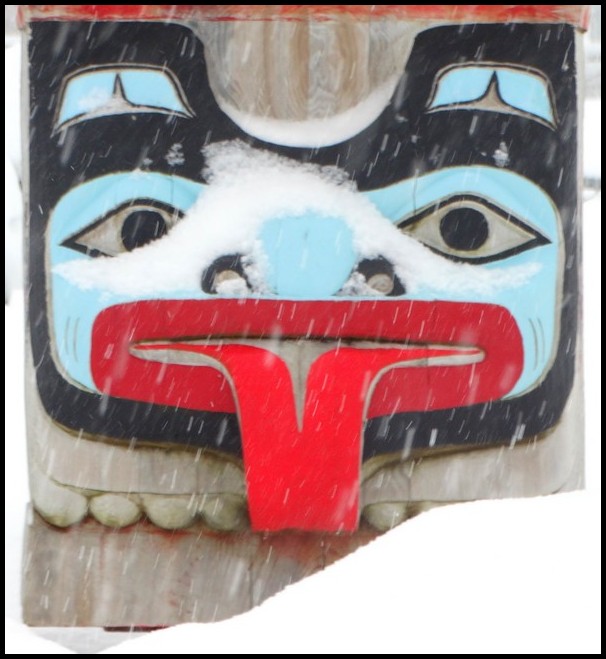
12. Many distinct indigenous tribes live in Alaska
Over a dozen different indigenous cultures have historically made their homes in the vast region that is now Alaska. They occupied most areas of the region, from the far north to the central interior lands to the many islands and archipelagos off the coast of Alaska. The indigenous peoples occupied these lands for thousands of years before white men intruded in the 1700s and 1800s.
Since the geography, climates, flora and fauna vary significantly from area to area, the indigenous peoples’ cultures, lifestyles, food, clothing and arts vary, each suited to thrive in their particular natural conditions. In the far north, several tribes, often collectively called ‘Eskimos’ survive in extra-long, bitter cold winters and short, mild summers. Tribes in Alaska’s vast interior also live in harsh, cold conditions.
In the extremely remote Aleutian Island chain, native peoples live in a tree-less world, living mainly off the sea. Tribes on many other islands closer to the mainland in west, south and southeasatern Alaska often live from both land and sea.
Natives in these areas benefit from rich sea life, milder conditions and diverse plant and land animal life. These people, in particular, have developed sophisticated arts and trades, including wood carving, weaving, canoe and paddle making, elaborate clothing, ceremonial garments and masks.
To varying degrees, white settlers disturbed natives’ cultures and lands, but not to the extent of driving them out or wiping them out, as happened to many ancient tribes in South America. In contrast, many indigenous still live in Alaska to this day. They live in Alaska’s towns and cities, in native villages and in far-flung nomadic areas, making up nearly 16% of Alaska’s population.
Today, the US Bureau of Land Management officially recognizes nine distinct major native cultural region, 22 different languages and 229 native villages and one reservation in the state. In comparison, all of the lower 48 states combined recognize 245 native villages and 325 reservations. Indigenous peoples in Alaska have a lot more cooperation with the government, rights and independence.
Since I’m based in Juneau, in Alaska’s far southeastern panhandle, I’ve learned mostly about three main indigenous tribes here: Tlingit, Haida and Shimshian. They create spectacular totem poles, canoes, paddles, clothing, masks and other artworks. More than a dozen dramatic totem poles stand proudly around downtown Juneau. Many indigenous live in and around Juneau, making up an important part of the population.

13. Alaska has the largest concentration of Bald Eagles in the world
As most Americans know, the regal Bald Eagle is our national bird. They are a symbol of strength, courage and freedom.
Bald Eagles are native to North America, including the USA, Canada and northwestern Mexico. The largest populations are in the US. They are particularly abundant in Alaska, where it’s estimated that half the entire Bald Eagle population lives. Current estimates say that about 70,000 Bald Eagles make their homes in Alaska.
I’m very happy to report that the Bald Eagle population is increasing significantly. It’s estimated that between 2009 and 2021 their population quadrupled!
Recently I was able to go watch Bald Eagles just outside downtown Juneau. A local man tipped me off that the best place to see eagles is at the city dump. So recently I headed over to the dump and climbed a small hill just outside to look for Bald Eagles.
I saw 7 or 8 different eagles. Most of them were sitting solo high up in tall spruce trees, like the one pictured above. But I did also get to see a few eagles soaring and diving down into the dump. It was a great experience.
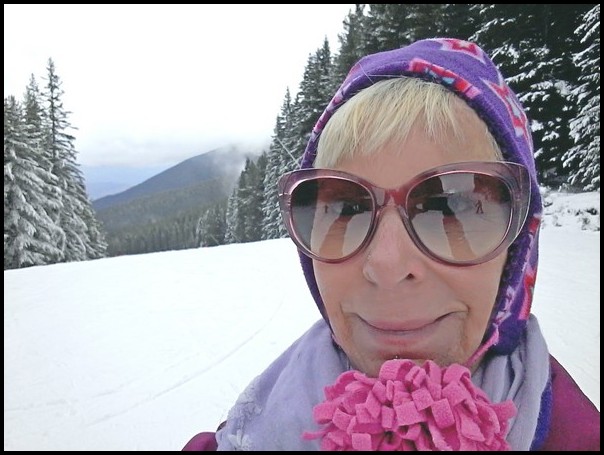
Summary
By coming to Juneau, Alaska for two months, I’ve learned a great deal about Juneau and Alaska. I’ve been reminded about Alaska’s interesting and unusual history; learned about the many culturally-rich native tribes; and delved into Alaska’s majestic and diverse geography and climates.
I’m enjoying my time here exceedingly and I hope you’re learning more about spectacular Alaska along with me.
========================
You might also enjoy:
8 Great Benefits of Visiting Alaska in Winter
Introduction to Juneau, Alaska
========================



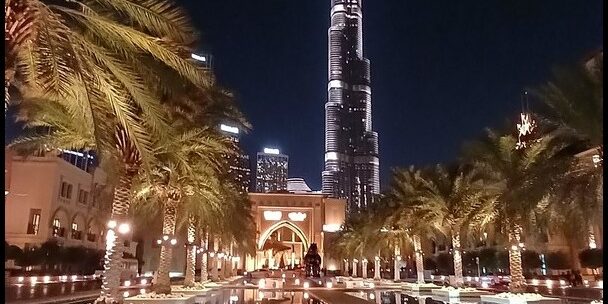



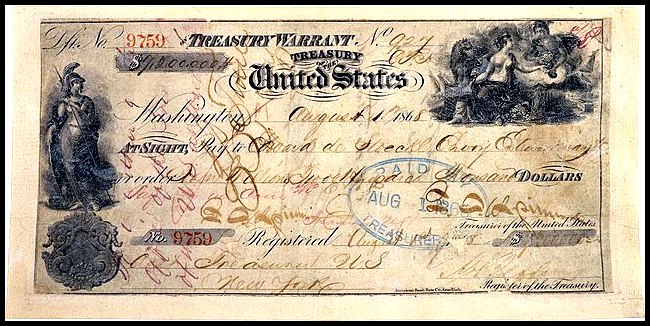
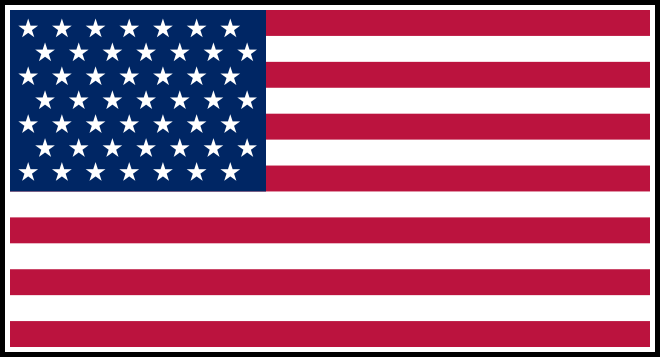
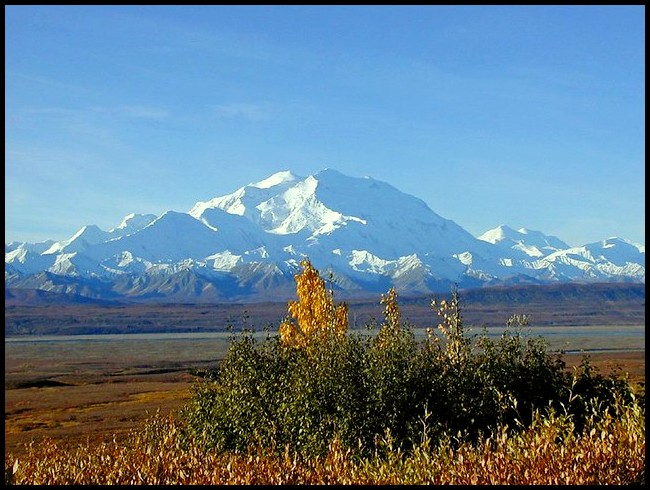
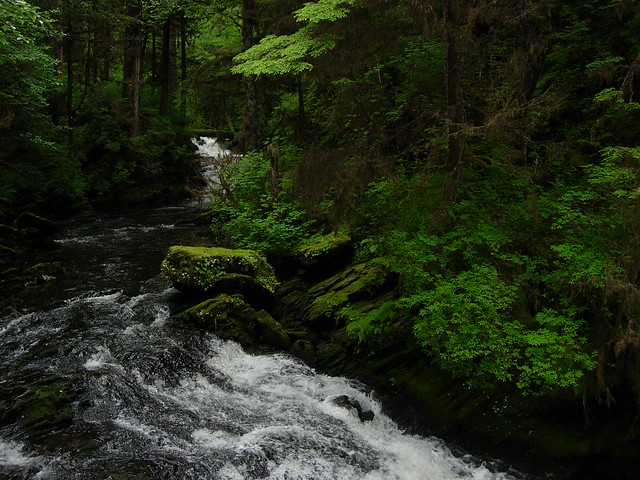
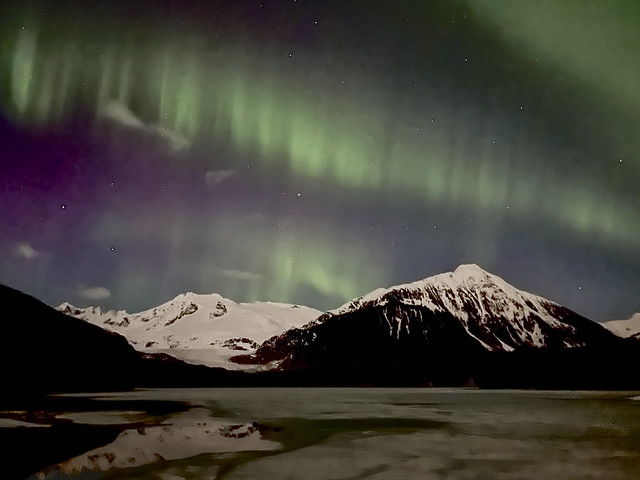

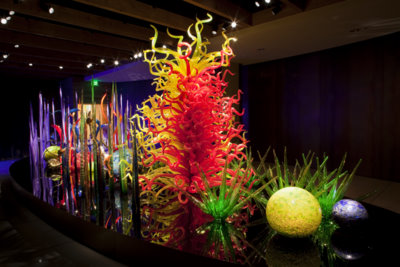



 Hi! I'm Lash, an American nomadic world traveler who's been traveling solo since 1998. I’m passionate about traveling the world nomadically and then sharing it all with you. I hope to inspire you to travel the world, to entertain you with tales from the road, and to help you reach your travel dreams. Welcome!
Hi! I'm Lash, an American nomadic world traveler who's been traveling solo since 1998. I’m passionate about traveling the world nomadically and then sharing it all with you. I hope to inspire you to travel the world, to entertain you with tales from the road, and to help you reach your travel dreams. Welcome! 



